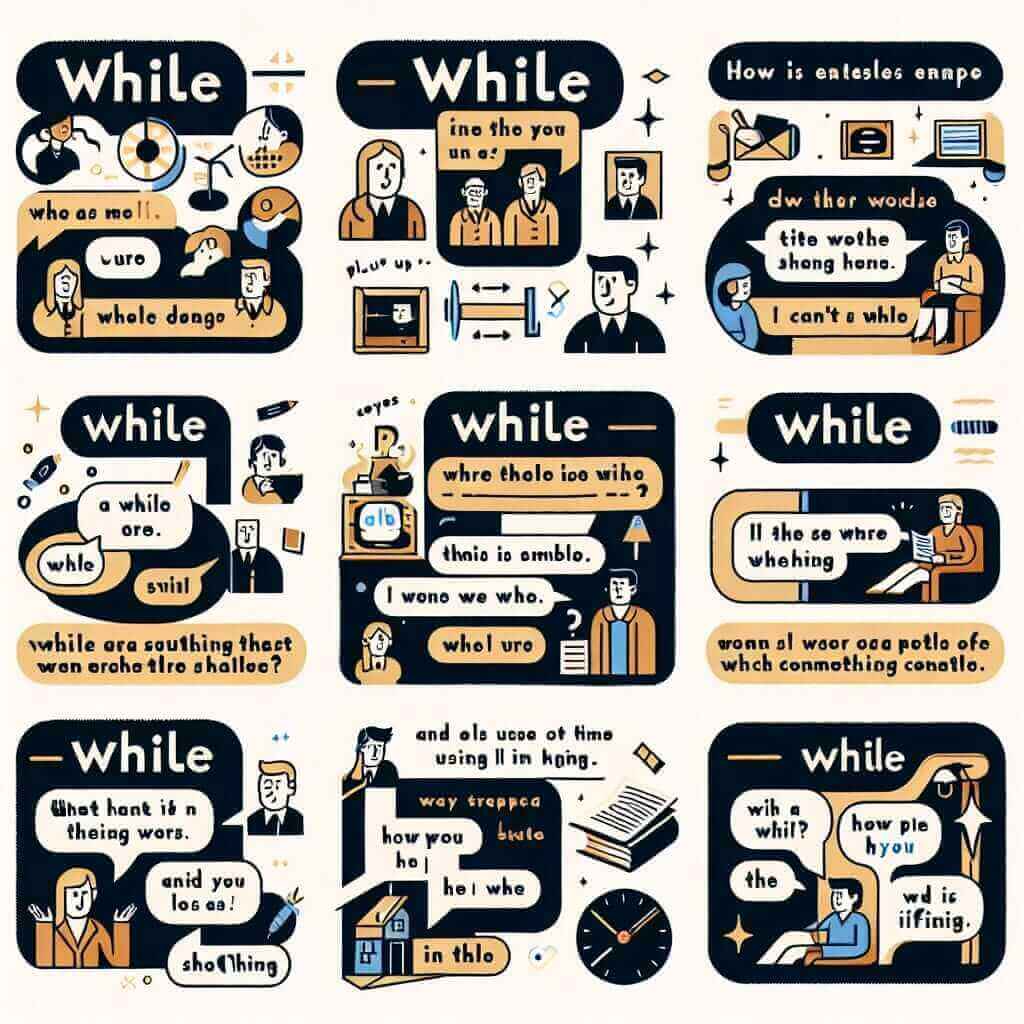“While” is a conjunction that frequently appears in IELTS exams, often testing a candidate’s ability to express simultaneous actions or contrast different ideas. Understanding the nuances of “while” can significantly elevate your grammar score and enhance your overall performance.
Let’s consider these examples:
Example 1 (IELTS Writing Task 2):
While some people believe that technology has made our lives easier, others argue that it has led to increased isolation.
Analysis: Here, “while” contrasts two opposing viewpoints about technology’s impact on society.
Example 2 (IELTS Speaking Part 2):
I vividly remember one summer vacation while I was living in Italy. While I was there, I learned how to cook traditional pasta dishes.
Analysis: In this instance, “while” signifies a period of time (living in Italy) within which another action happened (learning to cook).
Example 3 (IELTS Listening Section):
You may encounter a question asking you to complete a sentence like: “The museum offers free guided tours while the…”
Analysis: This incomplete sentence likely indicates a time-based relationship, requiring you to listen carefully for the missing information (e.g., “exhibition is open”).
Understanding the Multifaceted “While”
“While” plays a crucial role in establishing clear connections between ideas and events. Its frequency in the IELTS exam underscores its significance for non-native English speakers aiming to achieve a Band 7 or higher.
“While”: Structures and Applications
1. Expressing Simultaneous Actions:
-
Formula: Clause 1 + while + Clause 2
-
Example: I like to listen to music while I study.
Analysis: Both actions (listening to music and studying) are happening at the same time.
2. Contrasting Different Ideas:
-
Formula: While + Clause 1, Clause 2
-
Example: While city life offers convenience, it can also be stressful.
Analysis: This structure presents a clear comparison between the advantages and disadvantages of city living.
3. Indicating a Period of Time:
-
Formula: While + Subject + Verb (Past Continuous)
-
Example: While I was walking home, I saw a beautiful sunset.
Analysis: “While” introduces a background action (walking home) that was in progress when another action (seeing a sunset) occurred.

Using “While” for a Higher Band Score
To demonstrate your command of “while,” consider these tips:
- Variety is Key: Don’t overuse “while.” Explore synonyms like “during,” “as,” or “although” to showcase your lexical resource.
- Punctuation Matters: Remember to use a comma after a “while” clause when it appears at the beginning of a sentence.
- Context is Crucial: Ensure that the meaning of “while” is clear within the context of your sentence or paragraph.
Common Errors to Avoid
-
Incorrect Tense Agreement: While I was watching TV, the phone rings. (Incorrect) – While I was watching TV, the phone rang. (Correct)
-
Missing Commas: While I enjoy traveling I also love spending time at home. (Incorrect) – While I enjoy traveling, I also love spending time at home. (Correct)
Conclusion
Mastering “while” is essential for achieving a high band score in the IELTS. By understanding its various functions, using it accurately in different contexts, and avoiding common pitfalls, you can confidently express complex ideas and enhance the sophistication of your writing and speaking. Remember to practice using “while” with past IELTS writing prompts and speaking topics to solidify your understanding.